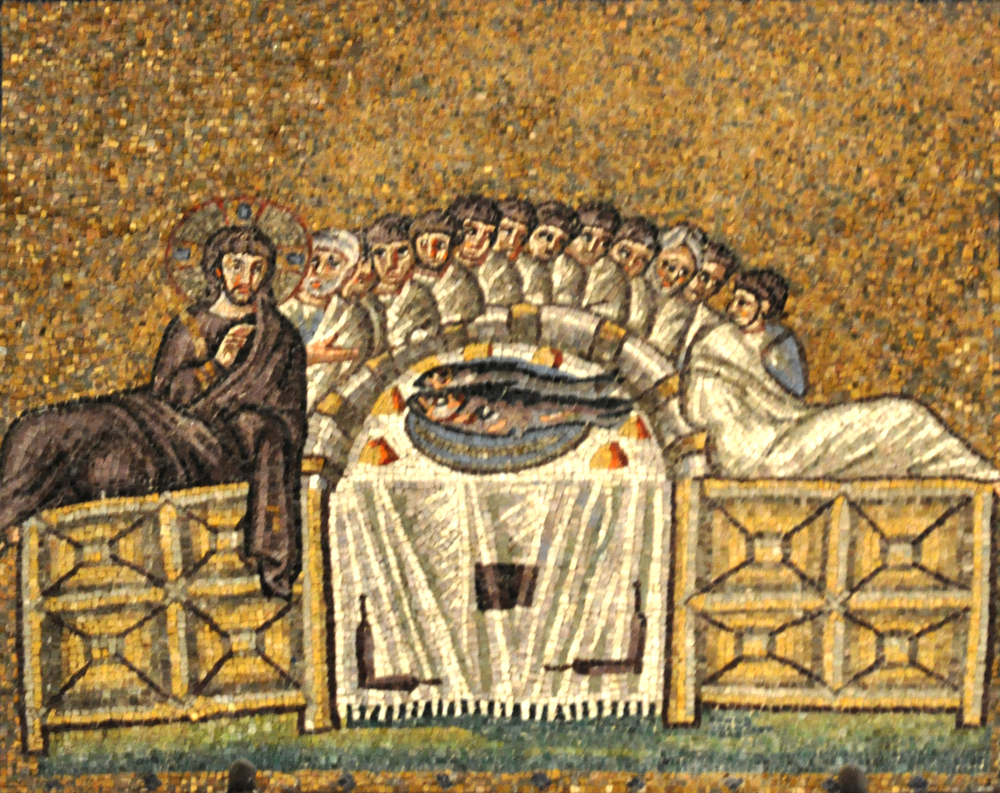The Last Supper

6th century
Mosaic
Church of Sant'Apollinare Nuovo, Ravenna
As in the banquet scenes in the catacombs, the men recline around a semi-circular table provided with bread and fish. The difference is that the catacombs images are multivalent allegories, while this work is specifically about the Last Supper: The context is a sequence of images from the Passion, and the men are clearly the twelve Apostles, with Peter at their head (next to Jesus, with his short, square beard).
Taken alone the fish are symbols of Christ. The Greek word for "fish" is ιχθογς, the letters of which were taken as an acronym for a Greek phrase meaning "Jesus Christ, Son of God, Savior." Many early Christian texts contemplated the Eucharist as an eating of the "fish" that is Christ (Jensen, Understanding, 54). In later years the imagery would be more historicist and the fish would be replaced by the paschal lamb that is proper to the Passover meal.
Taken together the seven loaves and two fishes on the table refer to the miracle of the loaves and fishes portrayed on the opposite wall. The "Bread of Life" discourse (John 6:22-59) explicitly relates that miracle to the Eucharist, which Jesus is believed to have instituted at the Last Supper.
Eleven of the twelve Apostles are pictured full-face, but the twelfth Apostle's face, squeezed in behind Peter, is only half visible. Perhaps this is Judas?
This is one of the 13 mosaics of the Passion and Resurrection of Christ along the upper band of the right wall of the nave.
View this image in full resolution.
View the entire right wall and left wall.
Read more about images of the Last Supper.
Go to the Christian Iconography home page.
Photographed at the church by Richard Stracke, shared under Attribution-NonCommercial-ShareAlike license.